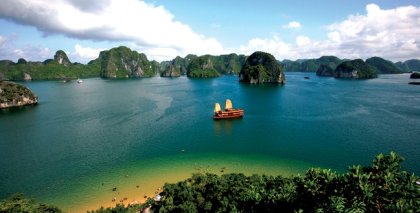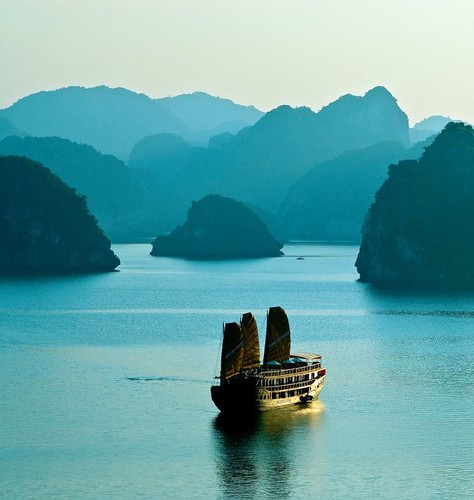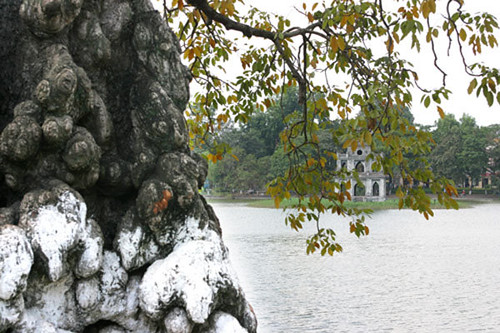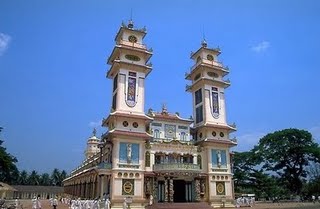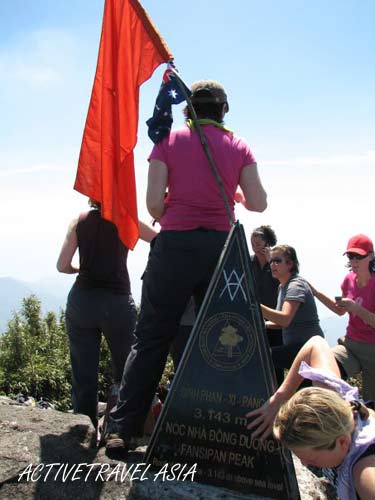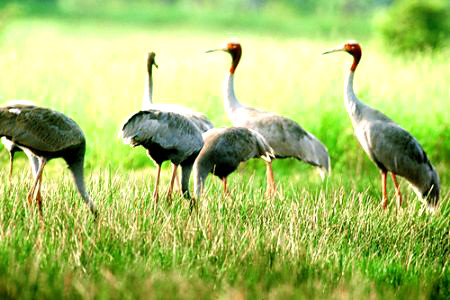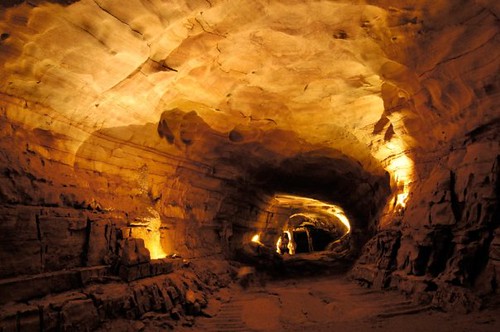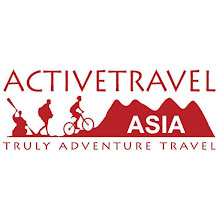Halong Bay is about 160 kilometers east of Hanoi and home to more than 2,000 Dr. Seussian shaped islands.

We knew before getting to Vietnam, this place was absolutely breathtaking, but when you actually are immersed in the beauty in all directions, it is hard to put into words. We spent three days and two nights in the bay that could possibly be voted as one of the new ‘7 Wonders of the Natural World,’ and it sure has my vote.
The trip started with a three hour drive to the bay with some interesting commentary on the Vietnamese culture from our guide, Ahn (pronounced like aim, but ending with an N). This was one of the first times that we truly felt like we were on a tourist trail, rather than a travelers route. We arrived to hordes of foreigners (we were the only Americans in our group of 11).
Beautiful old boats, called Junk Boats, clogged the waterways in the hundreds, and the boat staffs were in a constant state of busy work to prepare for their quick turnaround of guests.
We got to our boat and were blown away by its beauty. All made of dark walnut, crisp table cloths sat on the tables, a small wet bar, the staff wore spiffy white sailor uniforms… it even had the big captain’s wheel in order to steer! The weather was unbelievable, which added to the beauty.
The top deck of the Junk gave us the gorgeous views. The close islands were emerald set against the black rock and blue sky, while each successive island gradually shifted into shades of grey and blues until the farthest layer of islands were no longer visible; and this stretched to both horizons, so you can imagine that our pictures really won’t do the bay the justice it deserves. (it was worth it, trying to find that one amazing picture that would help, though)
We crossed the open water to get to the intimate channels between them all and pulled into a small inlet where only one other Junk parked, for some kayaking and swimming. Cass and I jumped into our tandem kayak and took to the water. Around the corner were two caves we paddled through to get to a protected cove, were we explored a bit on our boats. Back at nothing junky about it
the Junk, we got to spend the afternoon jumping off the different level decks of the boat and swimming in what felt like bathwater. I’ve never jumped into water that warm before so picturing a giant bathtub was an interesting picture from the upper railing of the boat.
After a great dinner of, no doubt, the seafood right from the bay, we cruised to our designated sleeping area of the bay, went to our room, and spent the night on the boat.
In the morning, we headed over to the Amazing Cave. Yes, that’s the name; and yes, it was pretty amazing. Anh had the funniest way of pronouncing the name that we all adapted for the rest of the trip, the ‘AH- mazingcave… AH-mazingcave.’ What was even more amazing, though, was the view from the exit of the cave. We climb up and out of it to an overlook of nearly the entire bay.
The Junks were parked there with their sails up, it wasn’t even a real sight, more like something projected on a green screen in Hollywood, it was that beautiful! This was couple picture extravaganza for us two! Oh, yeah!
After the AH-mazingcave and the view, we caught a transfer boat to an eco-resort the tour guide, Oceans Tours (I recommend them… look into them if your interested!) owned and operated. We spent the afternoon relaxing in the shade of our private bungalow on the beach. I’ve always wanted to stay in one of these, handmade, bamboo huts, and finally I got to. It was AH-mazing and relaxing.
The last morning we got up and had a two to three hour boat ride back to the harbor. We had to get moving after breakfast to keep on schedule and get back into Hanoi at a reasonable time.
We transferred back to the original Junk Boat we slept on with a different load of passengers at the AH-mazingcave sight, where we inspired several of our new friends to take some funky pictures like we always like to do! Good fun, what’s better than a jump picture, or leaning on the rocks??
In my travels throughout my life, I’ve always had a ‘Top 5 Place I Have Eaten Lunch’ list in my mind. I like thinking of the wonders of this world and the great opportunities I’ve had to see so much of it.
Similarly, I think it helps to stay present on any trip, no matter where you are, because you may just have a sneaky entrance into this list. I must say that Ha Long Bay has entered my list (I know you’re curious…
Apostle Island sea caves, the narrow canyons in the back country of Canyon lands N.P., carving a lunch table and chairs out of the snow after snow shoeing in the shadow of Mt. McKinley in Alaska, Camp Muir on Mt. Rainier). It’s a fluid list, but one that’s purpose of existence is to give me a reminder to take pleasure in traveling, perspectives and priorities, the natural world, and the details of life.
Sitting on the top deck of the Junk boat traveling passed all the island and sipping down the last of yet another coke… that will most likely always be towards the top of the list. Anyone interested in the new 7 wonders project click here .
Source: travelblog
Recommendation in Ha Long Bay:
Ha Long Bay Cruise
Ha Long Bay Kayaking


